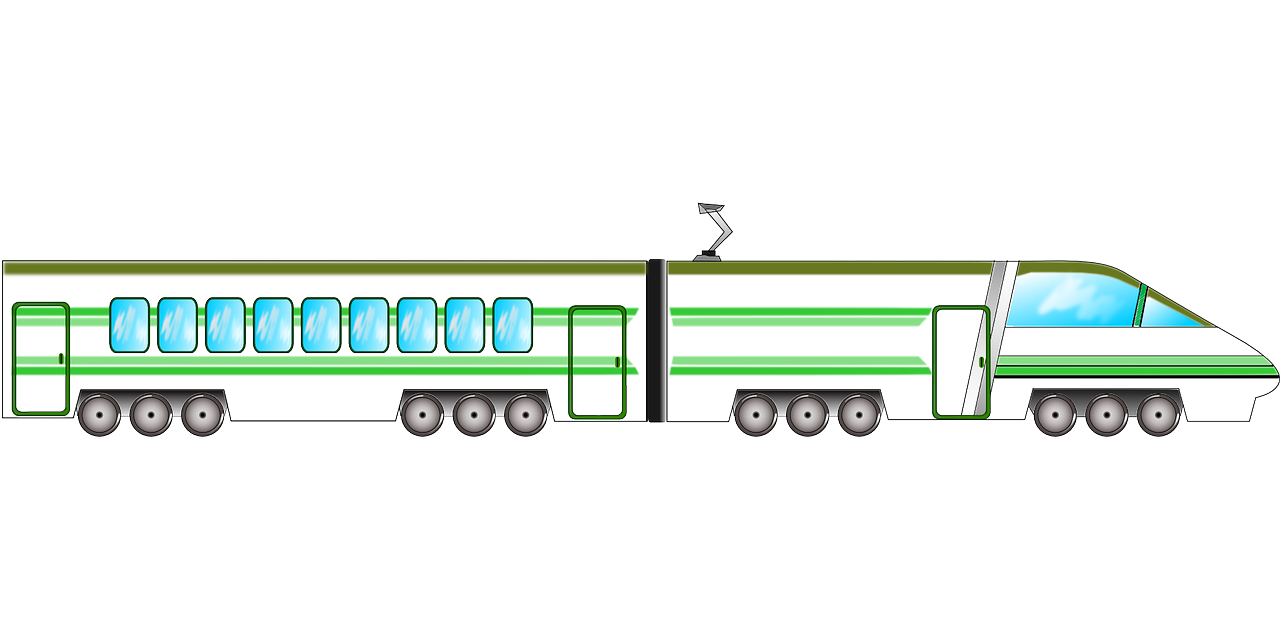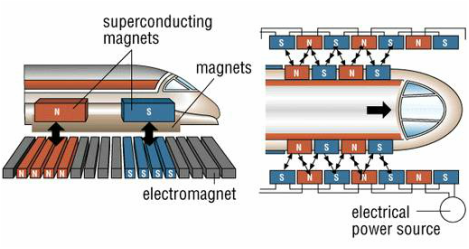Table of Contents
The world of train technology has been on a transformative journey, pushing the boundaries of speed, efficiency and sustainability. Over the years, we have witnessed remarkable innovations in the field, from the advent of high-speed trains to the development of magnetic levitation (maglev) and the futuristic promise of hyperloops. These innovations are not only changing the way we travel but also redefining our understanding of transportation systems. In this article, we will explore the cutting-edge innovations in train technology, from maglevs to hyperloops and their potential impact on the future of transportation.
The realm of train technology is on a relentless and transformative journey, pushing the boundaries of what was once considered possible in terms of speed, efficiency and sustainability. As we navigate this thrilling odyssey, we find ourselves at the forefront of groundbreaking innovations that are reshaping the future of transportation. These innovations are not confined to trains as we once knew them; they encompass revolutionary concepts like magnetic levitation (maglev) and the futuristic promise of hyperloops. This article embarks on a journey through these cutting-edge innovations, exploring their potential to redefine the way we travel and revolutionize our understanding of transportation systems:
High-Speed Trains: The evolution of high-speed trains represents a monumental leap in rail technology. These trains, capable of reaching astonishing speeds, have dramatically reduced travel times between cities and regions. The advent of dedicated high-speed rail networks in countries like Japan, France and China has ushered in a new era of rapid and efficient rail travel.
Magnetic Levitation (Maglev): Maglev technology stands as a testament to human ingenuity. By employing powerful magnets to lift and propel trains above tracks, maglev systems have eliminated the friction associated with traditional rail travel. This breakthrough not only enables trains to achieve breathtaking speeds but also promises quieter, smoother rides and reduced maintenance costs.
Hyperloop: The hyperloop concept is nothing short of revolutionary. Conceived as a high-speed, low-pressure tube transportation system, hyperloops have the potential to transport passengers and cargo at supersonic speeds, rivaling even the fastest airplanes. With the promise of near-vacuum conditions inside the tube, energy efficiency and reduced travel times are on the horizon.
Sustainability Focus: The future of train technology is inherently intertwined with sustainability. Electric and hybrid trains are increasingly replacing diesel locomotives, reducing greenhouse gas emissions and minimizing the environmental footprint of rail travel. Additionally, research into alternative fuels and renewable energy sources for trains is advancing, promising even greater sustainability in the industry.
Smart Infrastructure: Cutting-edge innovations extend beyond the trains themselves. Smart infrastructure, including sensor networks, artificial intelligence and predictive maintenance systems, is enhancing the safety, reliability and efficiency of rail networks. These advancements are making train travel safer and more seamless.
Global Connectivity: High-speed rail networks and maglev systems are contributing to increased global connectivity. Ambitious projects are underway to connect continents through transcontinental rail networks, bridging nations and facilitating the movement of people and goods on an unprecedented scale.
Urban Mobility: Train technology is not limited to long-distance travel; it’s also playing a pivotal role in urban mobility. Metro systems, light rail and commuter trains are transforming how people navigate bustling cities, reducing traffic congestion and promoting sustainable urban development.
Innovation Ecosystem: The pursuit of cutting-edge train technology is fostering a vibrant innovation ecosystem. Collaboration between governments, research institutions and private sector partners is accelerating the pace of technological advancement, with promising prototypes and real-world projects continually emerging.
In conclusion, the journey of train technology is a testament to human progress and our unyielding quest for innovation. From high-speed trains that race across continents to the magnetic levitation marvels that defy gravity and the tantalizing promise of hyperloops that could revolutionize long-distance travel, the future of transportation is unfolding before our eyes. These innovations are not just transforming the way we travel but also challenging us to reimagine what is possible in the world of transportation systems. As we stand on the precipice of a new era in train technology, the possibilities are boundless, promising a future where speed, efficiency and sustainability converge to redefine the way we connect our world.
Looking for more insights? You’ll find them right here in our extended coverage: How Maglev Works | Department of Energy
High-Speed Trains: Revolutionizing Rail Travel
The introduction of high-speed trains was a pivotal moment in the evolution of train technology. These trains, capable of reaching speeds well over 200 miles per hour (320 kilometers per hour), have dramatically reduced travel times between cities and regions. Countries like Japan, France and China have led the way in implementing high-speed rail networks, setting new standards for efficiency and convenience in rail travel.
One of the key innovations behind high-speed trains is their aerodynamic design, which reduces air resistance and allows for smoother and faster travel. Advanced track systems, including dedicated high-speed rail lines, ensure stability and safety at high speeds. Moreover, these trains often employ regenerative braking systems to recover and reuse energy, making them more environmentally friendly.
Don’t stop here; you can continue your exploration by following this link for more details: the future of transportation | | Nevomo performs the … – Nevomo

Magnetic Levitation (Maglev): Defying Gravity
Maglev technology is a true marvel of engineering that takes train travel to the next level. Instead of relying on wheels and tracks, maglev trains use magnetic fields to levitate above the guideway, eliminating friction and allowing for extremely high speeds. This innovation has the potential to redefine what is possible in rail transportation.
Japan and Germany have been at the forefront of maglev development, with Japan’s Chuo Shinkansen and Germany’s Transrapid being notable examples. Maglev trains have the potential to travel at speeds exceeding 300 miles per hour (480 kilometers per hour), making them not only incredibly fast but also highly energy-efficient. By reducing the physical contact between the train and the track, maglev systems minimize wear and tear, resulting in lower maintenance costs and increased longevity.
To delve further into this matter, we encourage you to check out the additional resources provided here: (PDF) A prototype of an energy-efficient MAGLEV train: A step …

The Promise of Hyperloops: A Glimpse into the Future
While high-speed trains and maglevs represent significant advancements in rail technology, the concept of hyperloops takes transportation innovation to a whole new level. Proposed by Elon Musk in 2013, the hyperloop is a futuristic mode of transportation that involves pods traveling through near-vacuum tubes at supersonic speeds, potentially exceeding 700 miles per hour (1,120 kilometers per hour).
The hyperloop’s unique combination of reduced air resistance and magnetic propulsion could revolutionize long-distance travel. Passengers could traverse vast distances in a matter of minutes, making it possible to commute between cities that were previously too far apart for practical daily travel. Additionally, hyperloops have the potential to be powered by renewable energy sources, making them an environmentally friendly alternative to traditional transportation methods.
However, it’s important to note that hyperloop technology is still in the experimental phase, with several technical, logistical and regulatory challenges to overcome before it becomes a reality. Companies like Virgin Hyperloop and Elon Musk’s The Boring Company are actively working on developing and testing hyperloop systems, but widespread adoption is likely years away.
You can also read more about this here: Nevomo (@nevomo_tech) • Instagram photos and videos

Shaping the Future of Transportation
Innovations in train technology, from high-speed trains to maglevs and hyperloops, are reshaping the way we think about transportation. These advancements are not only about speed but also about sustainability, safety and efficiency. As the world grapples with congestion, environmental concerns and the need for faster travel, these innovations offer promising solutions.
While high-speed trains and maglevs are already operational and making a significant impact in various parts of the world, hyperloops remain on the horizon, tantalizing us with the possibility of revolutionary transportation. The future of train technology is undoubtedly exciting and as these innovations continue to evolve, we can expect a more interconnected and efficient world where distance is no longer a barrier to mobility. Whether it’s through the expansion of high-speed rail networks, the implementation of maglev systems or the eventual realization of hyperloops, the future of train travel is bound to be faster, greener and more convenient than ever before.
Should you desire more in-depth information, it’s available for your perusal on this page: 10.4 – Future Transportation Systems | The Geography of Transport …
More links
Don’t stop here; you can continue your exploration by following this link for more details: How Maglev Works | Department of Energy
